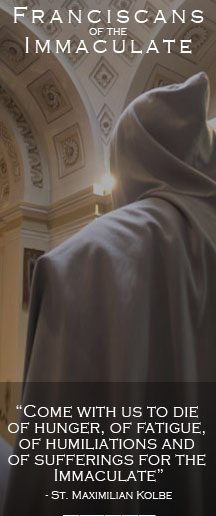From Monthly Magazine to daily Newspaper
St. Maximilian engaged in evangelization using all the means he could put at the disposal of his genius. Above all, he employed his faith and his trust in the Immaculate. He bore great witness to his fidelity to the Lord Jesus, his observance of poverty and detachment from earthly things, and his freedom in reckoning with the powers of this world.
He pursued his mission on the front lines in pagan lands, devoting himself wholeheartedly to the apostolate of the printed word and thus establishing his presence as a “missionary of the pen”—as he liked to define himself. He used to say: “We desire to speak to every soul on earth, in every language, to make known all the graces that [the Immaculate] gives to souls, in order to urge these souls on to an ever greater faithfulness and more intense love.”
Adopting a military strategy which employed his scientific knowledge, St. Maximilian tapped into the enormous potential of the mass media to serve the “cause of the Immaculate.” In this regard he was the precursor and prophet of what the Church came to understand and put into effect only much later. Now more than ever, thanks to these means, the Church has the opportunity to truly bring all men and all nations into contact with the Gospel.
After having successfully launched the Polish monthly, Rycerz Niepokalenej, in May 1930, St. Maximilian, without possessing any knowledge of the Japanese language, almost immediately put out the first edition of Seibo No Kishi (Knight of the Immaculate) in Japanese. In just three years, the magazine’s circulation grew from 10,000 to 60,000 copies. Keep in mind that the number of Catholics in Japan at that time was no more than 100,000!
Earlier, in Poland, he had attributed his editorial success to supernatural factors and the secret drawing power of the Immaculate upon hearts. But it must be pointed out that this grace was at work in a truly gifted and cooperative soul. We can recognize certain techniques of publishing, marketing, public relations, internal auditing, employment of human resources and management in the production of the Japanese journal, which would make it fully competitive with both national and international publications of the present day.
In the area of media relations, St. Maximilian struck up friendships with journalists who wrote for secular publications. This collaboration drew the attention of the media world at large, and it facilitated a general accord and benevolence that proved beneficial to his enterprise. The magazine’s circulation exceeded that of other existing Catholic publications six times over, because it did not simply aim to provide more of what could already be found elsewhere, but its aim was also to attract Protestants and non-Christians. Members of this target audience would leaf through the magazine out of curiosity, but then they would find themselves taken by the presentation and, at last, conquered. Many of them asked to be baptized.
It is in these “Japanese years” that St. Maximilian conceived the idea of a Polish daily, Maly Dzienik. He had a well-defined plan, and he did not want the failure of similar Catholic enterprises to dampen the initiative. He conducted a study on the feasibility and pricing of the journal, placing trust in his writers and collaborators. He was even open to advertising shoes in order to put and keep the daily in operation! He formed a clear idea of the journal’s composition, including that of the lead article, the back page article and the editorial. He amazed everyone when he said: “The long, involved articles cause readers who are interested in current and relevant news to lose interest. Still, an appropriate selection of material forms minds and hearts. It is useful to include more in depth articles at times.” He planned its distribution, relying more on the traveling vendors than on individual subscriptions which would raise costs due to postage. He wanted to involve the Militia of the Immaculate and recompense them based on sales, convinced that the younger and unemployed ones could thus wise earn enough to support themselves and, at the same time, perhaps draw benefit from the instructive articles.
Keeping his ear to the ground, he suggested that it would also be good to approach governing circles and ascertain their positions more precisely, in order to be able to exert an influence in matters of religion. “One can accomplish much more with personal knowledge than with violent criticisms leveled against them. I am convinced,” he wrote, “that in this way one can identify many people of good will who might cause harm, but more out of ignorance than bad faith. Personally approaching another puts to rest many preconceived notions on the part of both one and the other” (SK 631).
But above all, he advised that “one must never lose sight of the scope of this first daily of the M.I.: to make the Immaculate ever more visible in the public square.” As for the destiny of the journal, he wrote that “the Immaculate will do whatever she wants, and she will make her will known to us through Father Provincial.”
This last quote tells us everything we need to know about the spirit of ardor that informed St. Maximilian Mary Kolbe’s apostolic vision. He was a religious, and so, for him, obedience to his superiors was an infallible guarantee of the will of God. He was a contemplative in action, a true missionary, just like the first Apostles.

